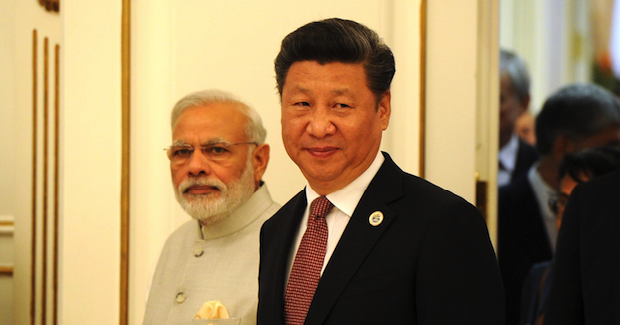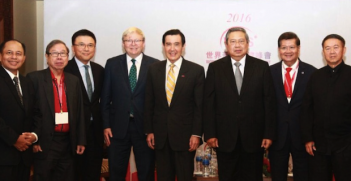After Trump: Will RCEP Replace the TPP?

The Trump Shock has cast a shadow over the trade architecture of the Asia-Pacific. During his transition, Donald Trump has repeatedly reaffirmed his vow to withdraw from the recently completed Trans-Pacific Partnership, the most significant trade agreement to be negotiated in the Asia-Pacific for many decades. Its potential collapse poses hard questions for efforts to reform the regional trading system. But the TPP is not the only game in town.
Another mega-regional trade agreement is currently under negotiation: the China-led Regional Comprehensive Economic Partnership (RCEP). Both the TPP and RCEP share a common goal of kick-starting a new round of multilateral trade liberalisation in Asia. Many analysts—and some governments—have argued RCEP can replace the TPP as a vehicle to achieve long-held aspirations for a ‘Free Trade Area of the Asia-Pacific’ (FTAAP).
However, the TPP and RCEP offer markedly contrasting visions for how the regional trade system should evolve. They feature differing levels of reform ambition, approaches to regional membership and leadership dynamics. Australian policymakers need to weigh the benefits and costs of the RCEP alternative carefully as negotiations move towards completion in 2017.
Reform ambition
The first difference is their level of ‘reform ambition’—the means of and extent to which the agreements liberalise trade. The TPP’s reform ambitions were very high, intent on developing new trade law in areas that have previously been under-addressed or ignored by the World Trade Organisation (WTO). Its so-called ‘WTO-Plus’ provisions developed new regulations in a wide range of policy areas including investment, services, intellectual property, e-commerce, transparency, environmental standards and labour rights.
RCEP’s ambitions are far more modest. Negotiations have focused on the more traditional matter of reducing tariff barriers, and members have described the goal as only a ‘WTO-consistent’ agreement. Many of the regulatory issues which proved controversial in the TPP—particularly intellectual property and Investor-State Dispute Settlement—are not present in RCEP. In their place are a range of economic and technical cooperation mechanisms to support developing economies.
RCEP’s lower ambition offers both benefits and costs. The absence of WTO-Plus style reforms mean the agreement demands far fewer domestically sensitive reforms, and is better calibrated to the needs of countries in developing Asia. This means it will be much easier to negotiate. However, its trade creating effects will therefore be lower, and it circumvents controversy simply by leaving the challenging but impactful issues out. The trade interests of developed, service sector economies like Australia are thus better served by the TPP template.
Asia-Pacific vs Indo-Pacific
The two agreements also offer different visions of precisely who belongs to the Asian trade system. The TPP was squarely in the tradition of ‘open’ and ‘Asia-Pacific’ regionalism, which for three decades has been advocated by APEC. All APEC economies were invited to the negotiations, and the final agreement included an accession clause which would have allowed new members to join. While not all important regional players took up this invitation—particularly China, Indonesia and the smaller ASEANs—the 12-member agreement claimed a diverse mix of developed and developing economies from both Asia and the Pacific Rim.
RCEP breaks with these traditions by offering a ‘closed’ and ‘Indo-Pacific’ membership model. It is an ASEAN-centred agreement, with only the bloc and the six countries with which it presently has FTAs party to negotiation. It is not presently open to new members, and how the final agreement will manage accession remains to be seen. RCEP therefore includes China, India and the entire ASEAN bloc; but achieves this at the cost of losing the US and several others from the Americas. In this way, it marks an historic shift from an Asia-Pacific to Indo-Pacific architecture for regional economic integration.
The benefits of this architectural shift are a matter of debate. Both agreements are of roughly the same size when measured in terms of GDP and share of world trade. RCEP’s inclusion of China, India and all of ASEAN means it rectifies one of the most common criticisms of the TPP—that it failed to genuinely represent the Asian region. However, swapping out US for China and India does not automatically produce a superior outcome. The US not only remains the second most important export market for Asian economies (behind China), but is also the largest source of inward foreign investment—a role China is many years away from matching. Countries whose trade and/or investment ties are closer with the US stand to lose under this shift.
Can China lead?
Questions of leadership also loom large. The TPP was very much an American agreement: promoting the type of trade reform favoured by developed economies, composed principally of the US and its regional allies, and pushed forward by US trade negotiators. It also became linked to questions of geopolitics when it was included as the economic wing of the US Pivot to Asia policy in 2011. President Obama deliberately played to geopolitical considerations when selling the TPP to domestic audiences, arguing, “The TPP allows America—and not countries like China—to write the rules of the road in the 21st century, which is especially important in a region as dynamic as the Asia-Pacific”.
RCEP is widely understood to be the Chinese alternative. While officially ‘ASEAN-centred’, since negotiations began, China has been the prime mover structuring the negotiating agenda and pushing talks forward. Keeping with China’s self-professed advocacy for developing country interests, its membership and content prioritises the needs of developing economies in the region. China has also exploited the Trump Shock, and the anxieties this has produced, to stake a claim to regional leadership based on the RCEP. At the 2016 APEC Summit in November, Xi Jinping called on partners to support a Chinese drive to completing RCEP negotiations in 2017.
Whether China has the diplomatic skills and capacity to deliver on this promise remains to be seen. RCEP negotiations have been bogged down for three years by disagreements over the structure for tariff reductions; and major divisions exist within the group over the still-unsettled question of what regulatory matters are to be included and excluded. Hard bargains will need to be struck between the high-ambition developed countries and the more conservative developing ones, particularly India and Indonesia. Never before has China successfully executed such a brokerage role in international economic governance. Whether it can learn to do so in such short order is an open question.
The next steps
RCEP negotiations are ongoing and members have agreed to an aspirational goal of completing the agreement by the end of 2017. Prospects for a successful completion have strengthened because of the Trump Shock:
- With the TPP now moribund, RCEP is the only mega-regional free trade agreement that remains a going concern;
- Sensing an opportunity for leadership, China is redoubling its efforts to complete the deal;
- Developed countries which had previously favoured the TPP—especially Japan and Australia—are now committing extra effort to RCEP;
- Developing countries such as Indonesia and India are far more comfortable with the RCEP template, and are responding positively to Chinese overtures.
Whatever its relative merits, RCEP is clearly the future of the Asian trade system. Like the TPP, it seeks to provide a multilateral structure for regional economic integration. But it is not a perfect TPP substitute with lower reform ambitions, an Indo- rather than Asia-Pacific membership, and Chinese rather than American leadership. As negotiations gather pace in 2017, the final shape of the new regional trade architecture will begin to come into view.
Jeffrey Wilson is a reseach fellow at the Perth USAsia Centre. He is also a fellow of the Asia Research Centre and senior lecturer in international political economy. His research interests include international political economy, economic regionalism in the Asia-Pacific, and international resource politics.
This is an abridged version of a policy analysis published in the Perth USAsia Centre’s Indo-Pacific Insights Series (Vol 2, January 2017). The full report can be downloaded here and viewed via the website here.




